
Observational studies have recently taken place to evaluate the association between small particulate matter (PM2.5) levels (air pollutants) and acute lower respiratory infections (ALRI) among very young children, as well as a secondary intention of discovery ; Are these same links attributing to acute lung infections in older children, adolescents, and adults? Read on to learn how to ward off lung infections, even in very poor air quality environments.
The area of study was held in northern Utah (Wasatch Front) due to its variable concentrations of PM2.5 and fluctuations of temperature outside of the home. This area also houses more than 80 percent of Utah’s population.
The extensive study involved more than 146,000 participants of varying ages and gender. The goal of the study was to determine how impactful the air quality was on children ages 0 to 2 years of age in addition to older individuals. The study period span extended from 1999 to 2016, primarily of 77 percent of children (0 to 2 years).
The other subjects were grouped by ages of 0-2, 2-17, and ≥18 years.
Following the arrangement or classification by age for acute lung respiratory infections, calculations were based on the following key findings:
Those exposed to short term elevated levels of air pollution (PM2.5) utilized the health care system for ALRI across the board of children and adults.
Onset symptoms of ALRI increased within 1 week in young children exposed to elevated levels of PM2.5, in addition to another peak session after 3 weeks. Similar results occurred in older children.
Increased incidence of other respiratory illnesses (in particular in younger children) and influenza infections were more prevalent among older children and adults – following elevated levels of air pollution.
Comments from Dr. Horne who lead the study showing the connection between ALRI and PM 2.5:
“The air pollution itself may make the human body more susceptible to infection or may impair the body’s ability to fight off the infectious agents. It may be that PM2.5 causes damage to the airway so that a virus can successfully cause an infection or that PM2.5 impairs the immune response so that the body mounts a less effective response in fighting off the infection.”
How to Protect Against Respiratory Infections
Today there are a great number of natural methods to choose from to boost and support the immune system of all ages. These include starting with a health based diet, one that is high in antioxidants and nutrient rich. When this becomes difficult to achieve, quality supplements can zone in on weakened areas of the immune and body that need to be propped up.
Specific Nutrients
Key elements to lessen the effects of airborne particles/pollutants will also improve degenerative lung conditions such as asthma chronic bronchial infections. Look for some of the following suggestions:
Essential Fatty Acids (EFAs)
The word “essential” has never had more important meaning. Without these fats in their proper proportion, it would not be possible to remain well—let alone pain-free—throughout one’s lifetime. Huge strides have been made in science showing us the necessity for adequate amounts of EFAs for disease prevention and for fully functioning body systems. Of these, omega 3s are the ones most sought after by the body (typically found in fish and seed oils), especially since our diets have been traditionally high in the omega 6 fatty acids found in vegetable and grain cooking oils. (As stated earlier, the proper ratio for optimum balance in the body of omega 6 fatty acids compared to omega 3 fatty acids is a 1:1 ratio, whereas most people maintain a 20:1 or even 30:1 ratio).
Our body’s inflammation response, immune response, tissue repair and formation of every cell membrane all require an omega 3 fatty acid. Knowing that, it isn’t hard to understand why our bodies aren’t able to function properly, alleviate pain or the progression of chronic inflammatory problems on their own. People with chronic illnesses and inflammation who consume fish oils a few times a day have significantly less pain, shorter illness duration, and a better quality of life. When choosing a quality blend of fish oil, look for the ratio between DHA (docosahexaenoic acid) and EPA (eicosapentaenoic acid) to be approximately 2:1. Depending on the severity of one’s complaint, the following suggested dosage of fish oil would not be uncommon: 1000 – 3000 mg three times a day with food.
Gut Flora Necessary Immune/body Component
Our body’s individual microbiome environment—the community of microorganisms that perform a number of crucial functions in our body—is our constant companion and caregiver throughout our life, without which we could not survive. And, because these beneficial bacteria are key to a well-functioning immune system, it’s only natural that they help ward off chronic inflammation. We have 100,000 billion viable microbes in our intestines; of the fecal mass excreted from the body, 85 percent is biomass (bacteria).
The biggest threat to these 200 different species (7000 strains) is antibiotics. Considering the prominent place these microbes hold in our body, it isn’t hard to see how chronic inflammatory intestinal diseases like Crohn’s and colitis can besiege the body as a result of our gut’s having been napalmed by antibiotics. To support this crucial system, supplement daily with probiotics and eat fermented foods like kefir, natto and sauerkraut
Beta-Carotene (and Other Carotenoids)
Antioxidants such as beta-carotene and other carotenoids have been agreed upon by many scientists (including those at Yale University School of Medicine) as the antioxidant best suited to protect us against chronic illnesses. Plants are protected by their antioxidant compounds, and the people who consume these properties are similarly protected. Vitamin A and antioxidants are particularly earmarked to support lung diseases.
Beta-carotene and alpha-carotene are water soluble vitamins found in yellow and orange fruits and vegetables, but as these can merge with other phyto-nutrients, they may also be found in red and pink foods. Alpha-carotene is classified as pro-vitamin A, which means it can be converted into the active form of vitamin A known as retinol. Similarly, beta-carotene can also be converted into vitamin A. Thanks to their positive effect neutralizing free radicals in the body, clinical evidence and research studies supports the addition of carotenoids to help prevent abnormal cellular growth and activity involved in aliments such as cancer, cardiovascular health, vision, memory, dementia and diabetes.
Food sources include: carrots, squash, pumpkin, peppers, tomatoes, oranges, lemons, mangos, papaya and sweet potatoes. Certain green vegetables also have high amounts of carotenoids, such as kale, spinach, collard greens, thyme and cilantro.
Vitamin C
Vitamin C is impressive on many levels. A powerful antioxidant, vitamin C is highly endorsed for combating cancer and inflammation. Vitamin C is required for the repair of connective tissue, as well as the production of collagen. If you are undergoing intense exercise or recovering from an infection or injury, consider temporarily taking a higher dosage of vitamin C, 1–2 g daily.
Suggested dosage for optimum health: 2000–4000 mg, divided throughout the day.
Good food sources: Citrus fruit, strawberries, kiwi, bell peppers, berries, cantaloupe, mango and a variety of vegetables.
Vitamin D (Water Soluble)
Vitamin D protects us against air pollution and other exacerbations of lung infections. For the most potent form of vitamin D, choose vitamin D3 (cholecalciferol), the active form of vitamin D. Do not purchase vitamin D2, as it is not as biologically active or as safe as vitamin D3. The recommended dosage for vitamin D3, as put forward by the Vitamin D council, is a minimum of 1000 IU per 25 pounds of body weight.
B Vitamins
Studies reveal that B vitamins help lessen the effects of airborne particulates in some people: B vitamins like to be in balance with each other, although individual vitamins are needed for specific conditions. Take a quality supplement daily or the whole food form: Nutritional Flaked Yeast- 2 teaspoons two times per day in liquid. This form is also a complete protein source.
Liquid Iodine
Required for thyroid function and production of Thyroid Stimulation Hormone (TSH). Required daily: 1 to 4 drops of liquid iodine – 150 mcg per dosage, 3 times a day on tongue or in liquid. (7 month old infant requires almost the same amount as adults ( 130 mcg ).Learn much more about thyroid health, disease reversal and function; in my Reverse Thyroid Disease Naturally (June 2018)
Magnesium and Zinc
Work together to promote immune function, among many other tasks. Take daily. For example, magnesium 150 mg 1 to 2 times per day; Zinc picolinate 30 mg twice a day while sick and then reduce to once per day.
Live enzymes and antioxidants
Found abundantly in live food that has not been cooked (salads, fresh juice, raw fruits and vegetables).
Other contributing factors
Being indoors too much which also puts others at risk of transmitting infections.
Prolonged exposure of air pollutants puts one at risk of lung damage leading to increased susceptibility of ALRI symptoms.
Body contaminants; such as smoking or working in an unclear air environment, increases lung infections and more chronic respiratory diseases.
References:
American Thoracic Society. Brief exposure to tiny air pollution particles triggers childhood lung infections. https://www.eurekalert.org/pub_releases/2018-04/imc-bet041218.php. Published April 13, 2018. Accessed May 27, 2018.
Romieu I, Castro-Giner F, Kunzli N, Sunyer J. Air pollution, oxidative stress and dietary supplementation: a review. Eur Respir J. 2008;31(1):179-197.
Wood LG, Garg ML, Smart JM, Scott HA, Barker D, Gibson PG. Manipulating antioxidant intake in asthma: a randomized controlled trial. Am J Clin Nutr. 2012;96(3):534-543.
Michelle Honda, Reverse Inflammation Naturally, June, 2018. http://michelle-honda-blog.renewyou.ca/reverse-inflammation-naturally/
Saedisomeolia A, Wood LG, Garg ML, Gibson PG, Wark PA. Anti-inflammatory effects of long-chain n-3 PUFA in rhinovirus-infected cultured airway epithelial cells. Br J Nutr. 2009;101(4):533-540.
Copyright © 2018 – All Rights Reserved – Michelle Honda Ph.D.
Announcement
Look for my new forthcoming books “Reverse Heart Disease Naturally” (Jan.31, 2017) “Reverse Inflammation Naturally” (May 31, 2017) “Reverse Thyroid Diseases Naturally” (June 2018) and “Reverse Alzheimers/Dementia Naturally” (Nov.2018)
Where to Purchase:
Reverse Gut Diseases Naturally
Reverse Heart Disease Naturally
Reverse Inflammation Naturally
Reverse Thyroid Disease Naturally
Hatherleigh Press Page Buy Book RGDN
Local Book Stores in US and Canada
Disclaimer
While close attention was given to the accuracy of information in this article, the author accepts neither responsibility nor liability to any person with respect to injury, damage, loss or any circumstances involving alleged causes directly or indirectly related to the information in this article. The sole purpose is to educate and broaden ones awareness. This information is not meant to replace medical advice or services provided by a health care professional.





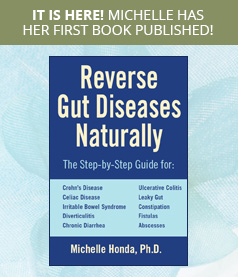

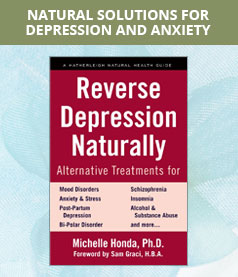
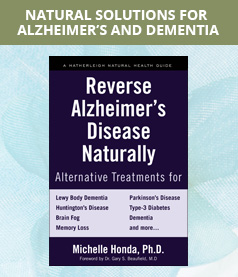
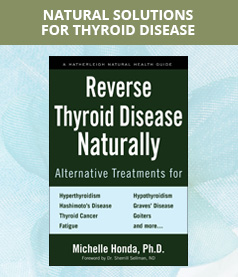

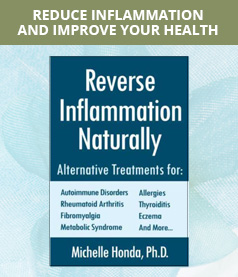
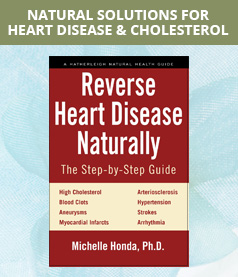
Follow Us!